The Steering Wheel Keeps Turning: Mustang History from the Driver’s Seat
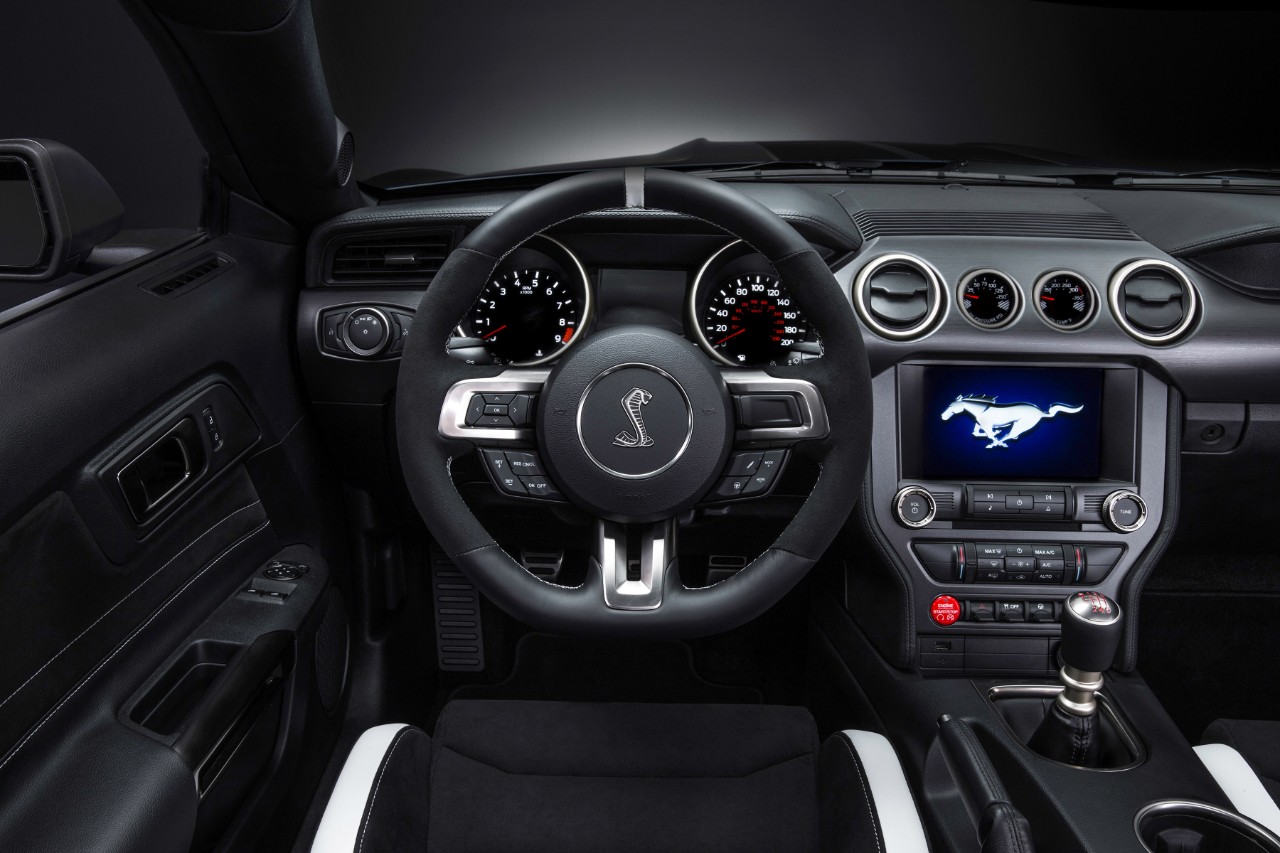
With the brand new Mustang gaining steady traction and the new GT350R ready to attack the track, Ford takes a look back into the history of the Pony Car from the most important seat: the driver’s. Here we see the details on how the steering wheel evolved with each generation of Mustang from introduction to the current.
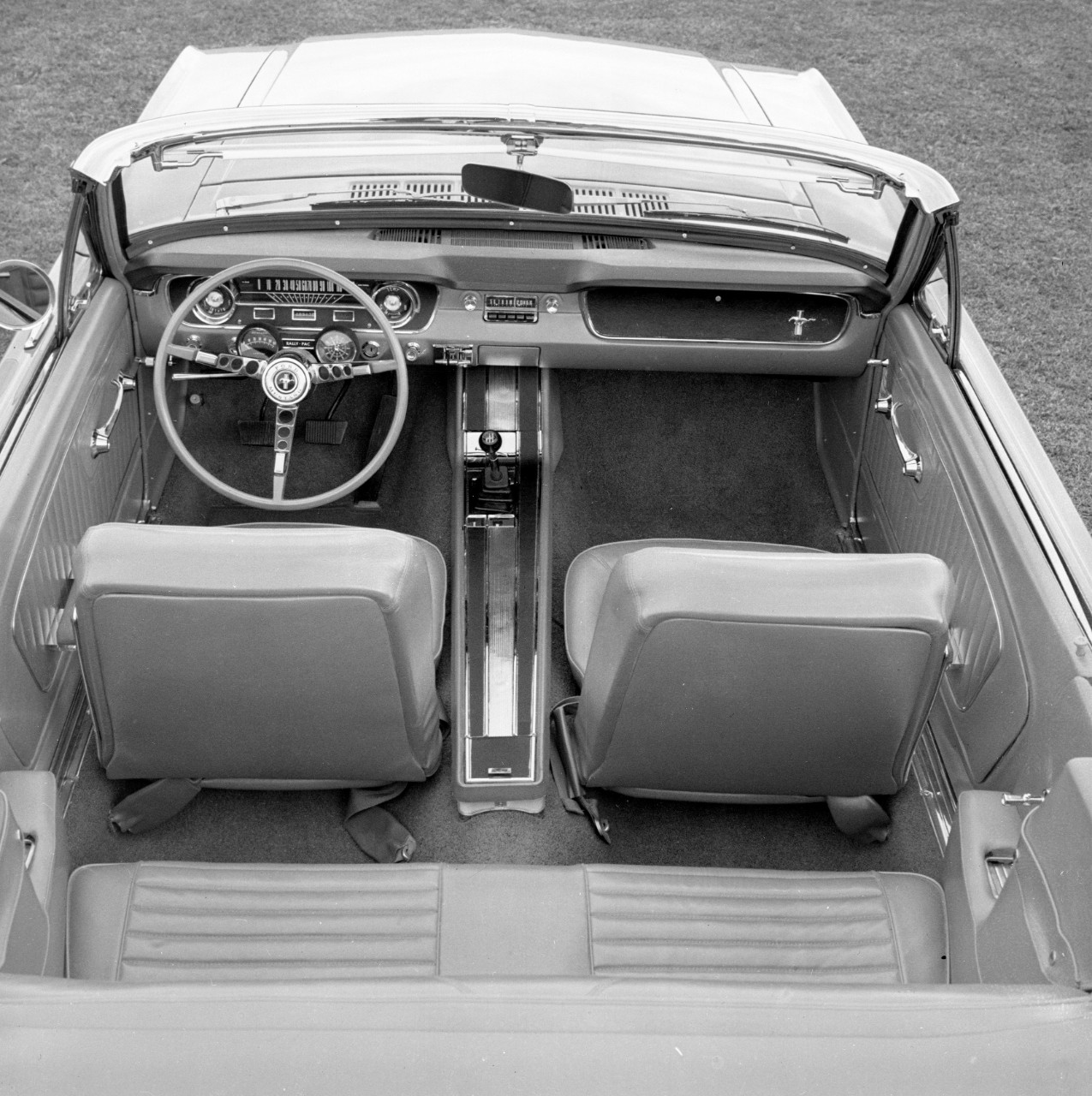
To start off we take a look at the original Mustang, the 1964. With a twin cockpit layout and the iconic three-spoke steering wheel, it was quickly established as a hit with American car buyers. What really sets off the wheel were the bare-aluminum spokes with a simulated wood rim and horn button right in the center of it all. If the wheel looks large you have to remember: power steering was optional so a sixteen-inch diameter wheel was standard.
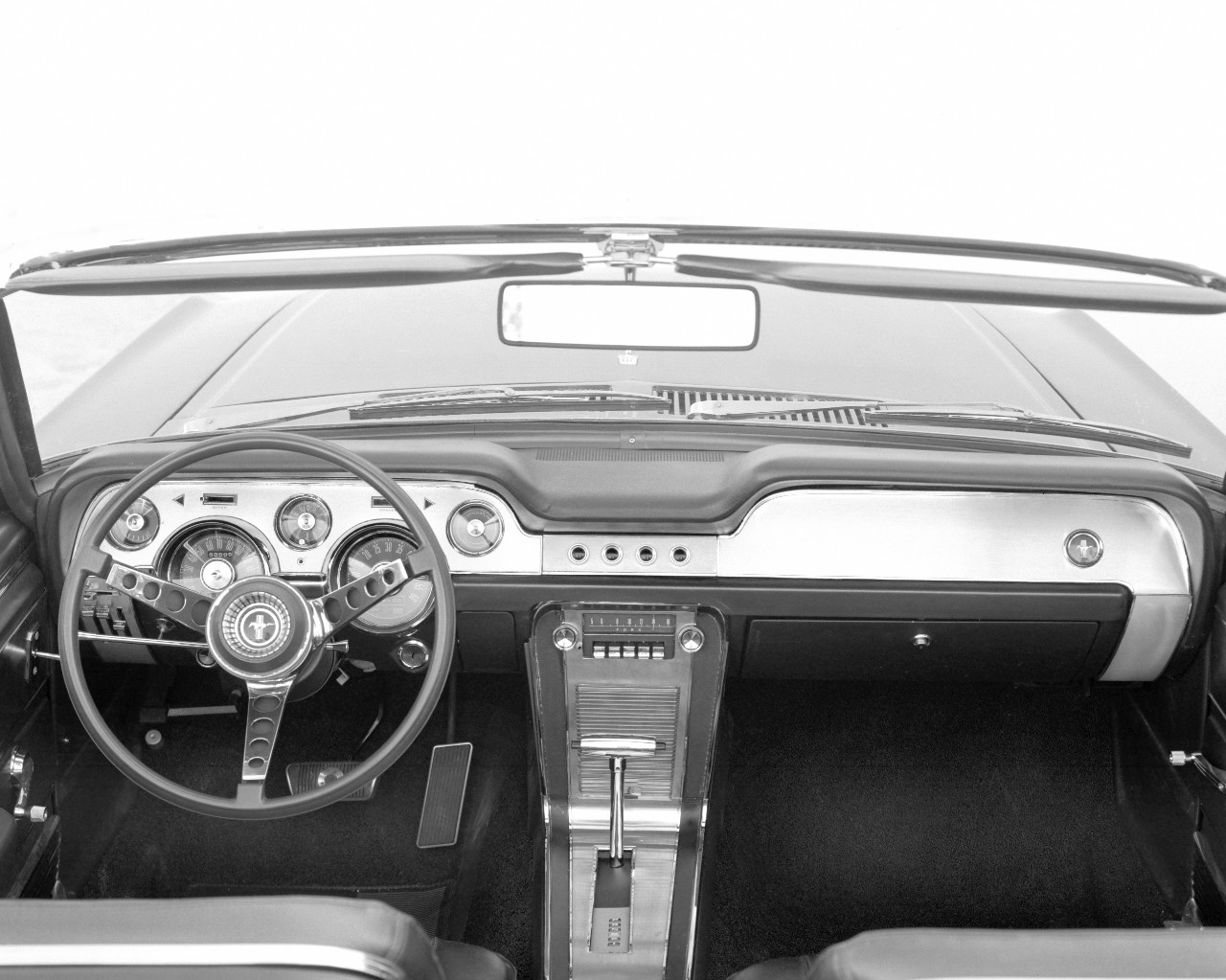
Then in 1967 the Mustang gained a tilt-away wheel that could be positioned in seven steps to perfectly fit the driver and to make getting in an out far easier for all drivers. It also used a new 20.3:1 steering ratio on the power steering system for faster turn-in and a sportier feel.
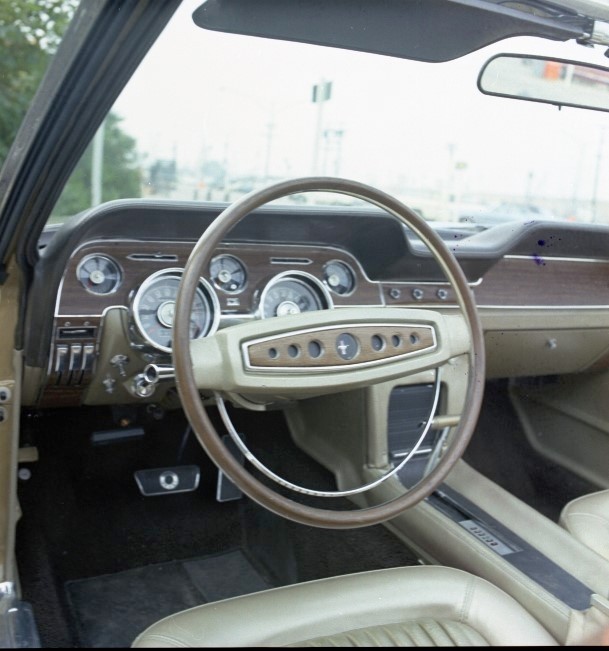
In 1968, vehicle safety was on everyone’s minds and that resulted in Ford using a collapsible steering column. The three-spoke wheel went away so that a large, cushioned center section could be installed to protect the driver’s head. It also meant that the center hub horn button was replaced with a metal half-circle on the lower rim.
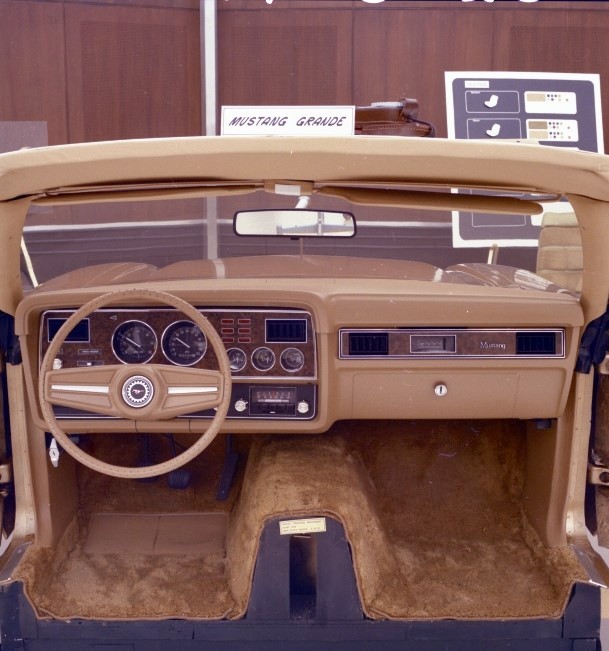
Next came the Mustang II in 1974 and Ford wanted a more contemporary feel. This included a power-assisted rack-and-pinion steering. This let ford use a smaller 16-inch, two-spoke steering wheel.
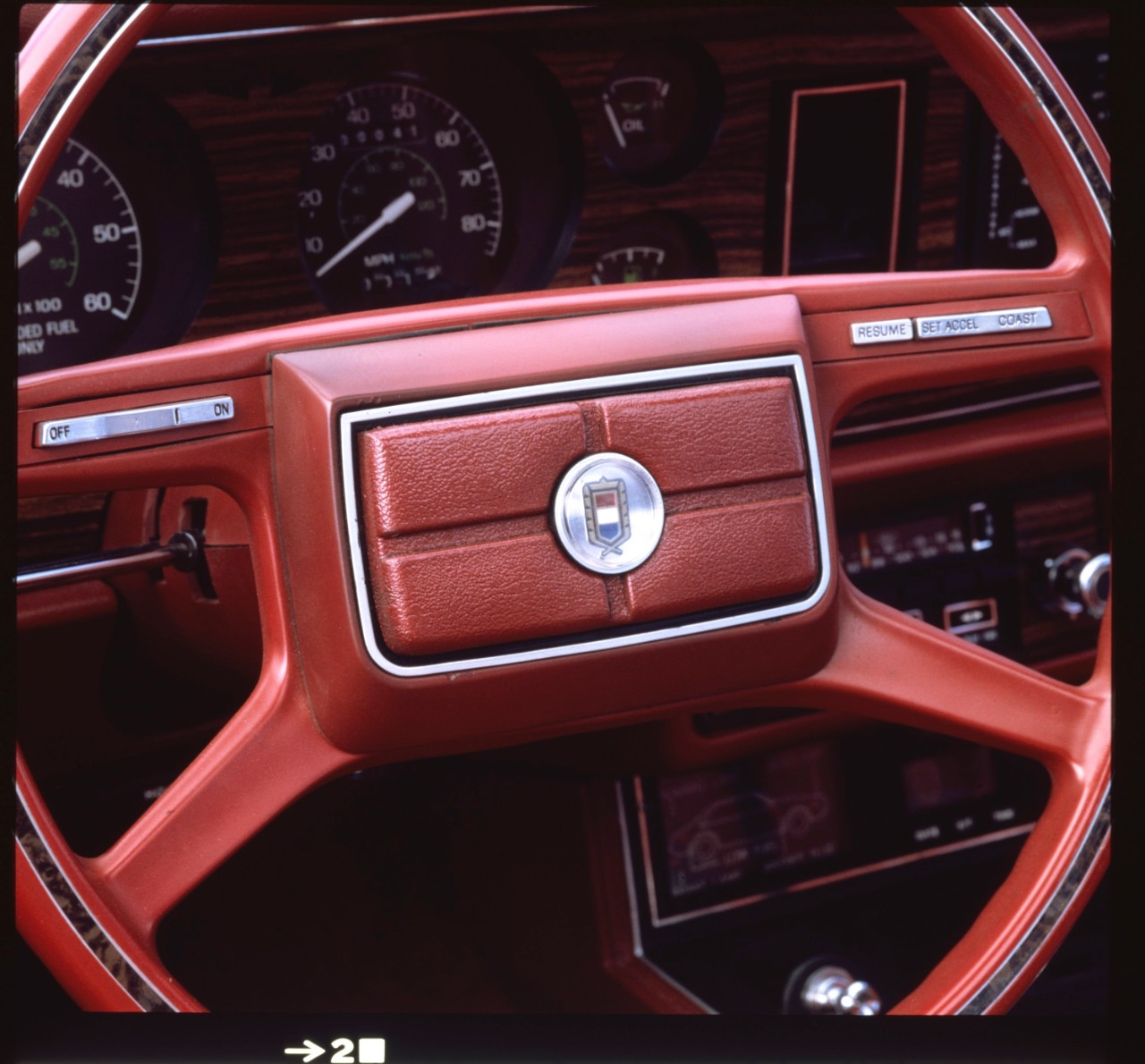
The legendary Fox-body made its way to our garages in 1979 and here, Ford wanted a more Euro-style inside and out. The steering wheel was no exception and a four-spoke wheel with cruise-control buttons added to the top spokes. This design also moved the wiper and light controls to the steering column with stalk controls. This would also be the design cues future Ford products would go with.
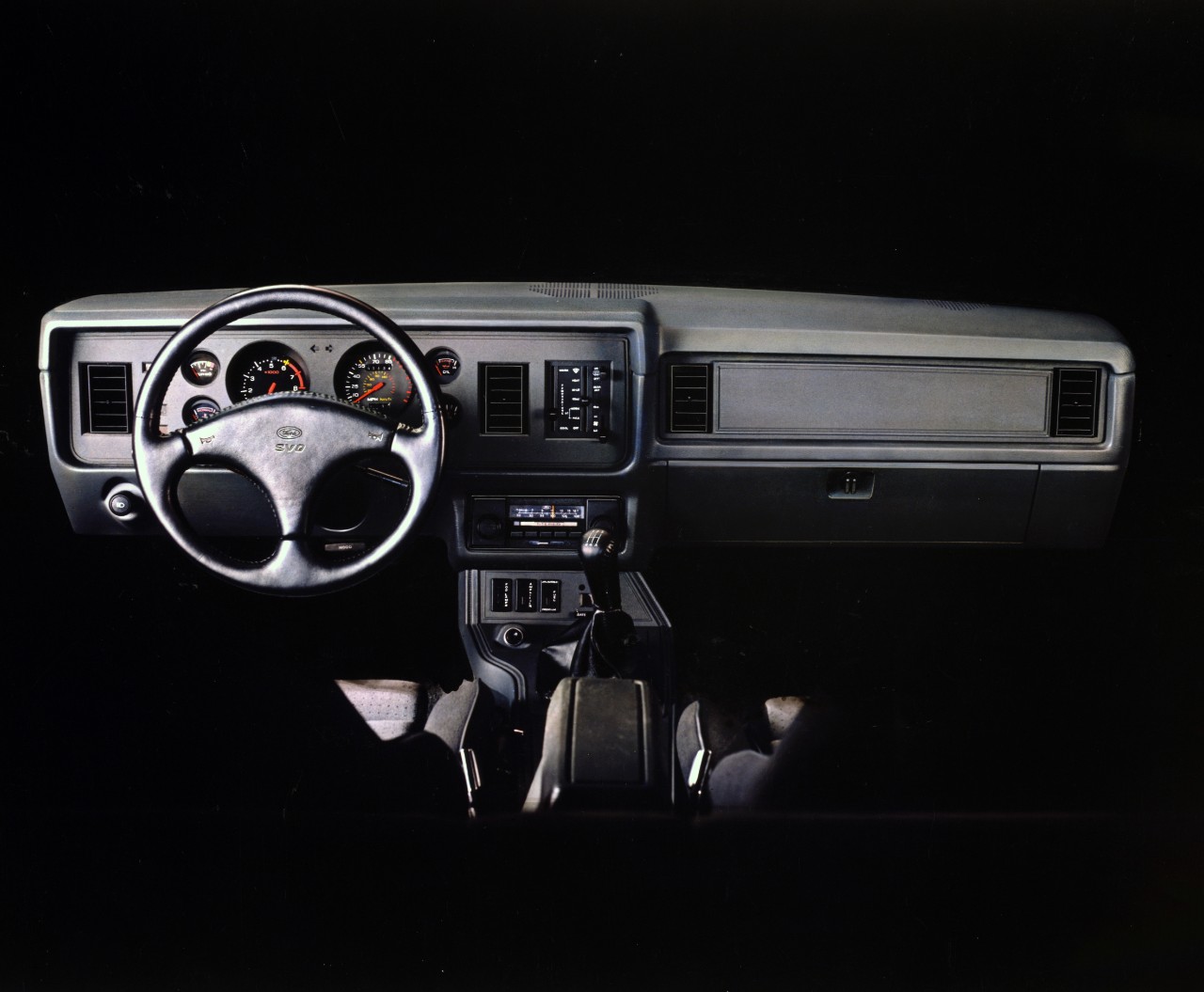
Then, in 1984, the SVO was brought out and it reveled in the performance world. Not only did it get a turbocharged four-banger but also a three-spoke, tilting and telescoping steering wheel with a thicker rim and a smaller diameter. In case you forgot you were in an SVO, the logos were embossed into the leather on the center of the wheel.
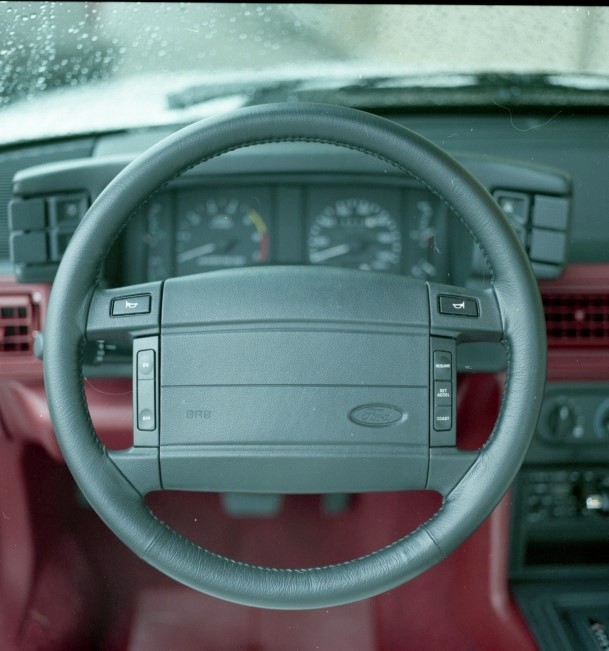
Safety became a paramount concern again in 1990 and airbags became standard on the Fox-body. A new wheel was designed to incorporate it. The cruise control buttons moved to the sides of the airbag center while the horn buttons occupied the top spokes of the four-spoke wheel.
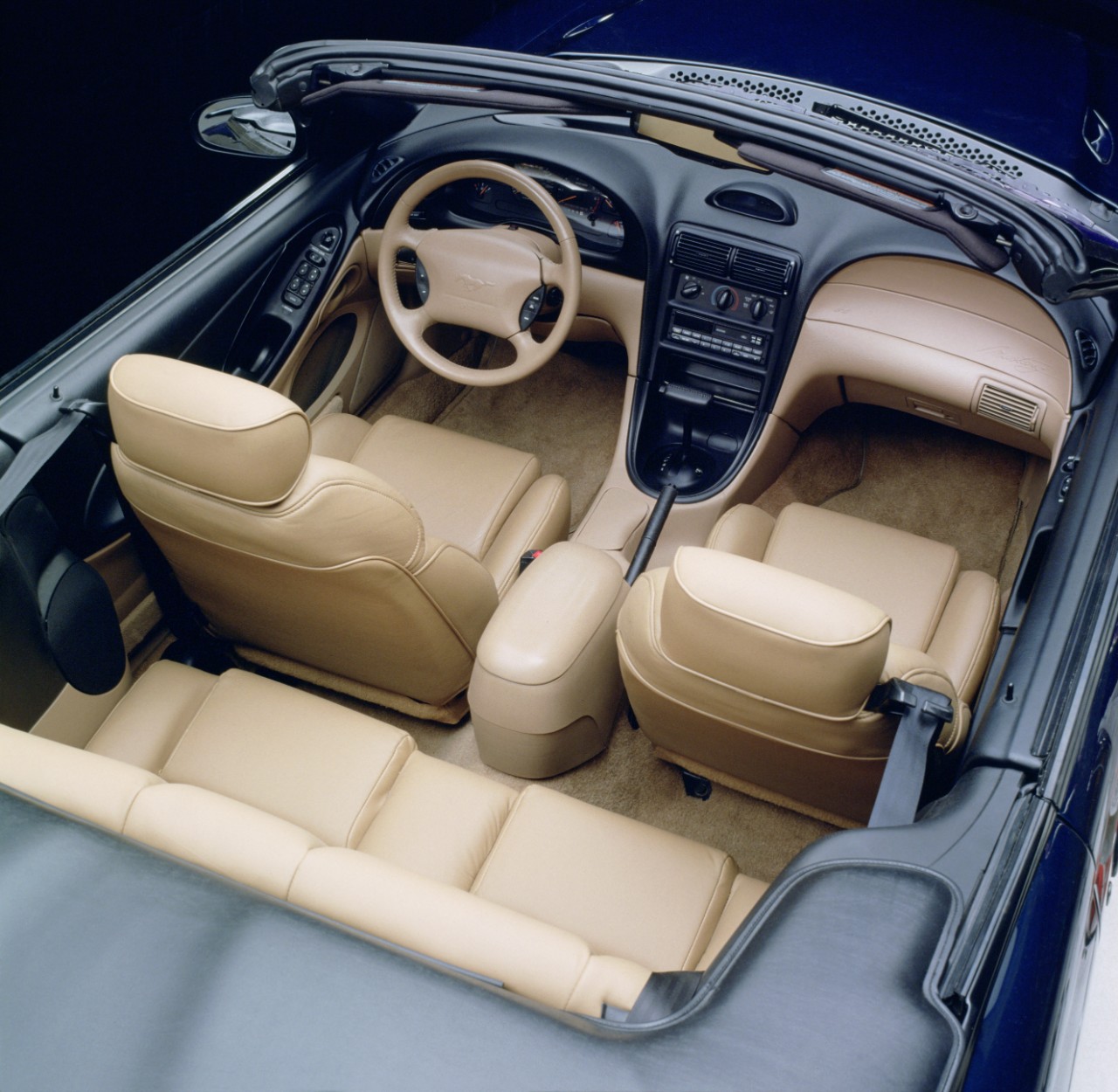
1994 saw a design change inside and out of the Mustang with the fourth-gen. As a nod to the original Mustang, it gained a split cockpit layout and a more rounded and modern steering wheel design. For the first time, Ford made the horn button integrate into the airbag cover and various buttons were designed to help the driver stay focused on the road.
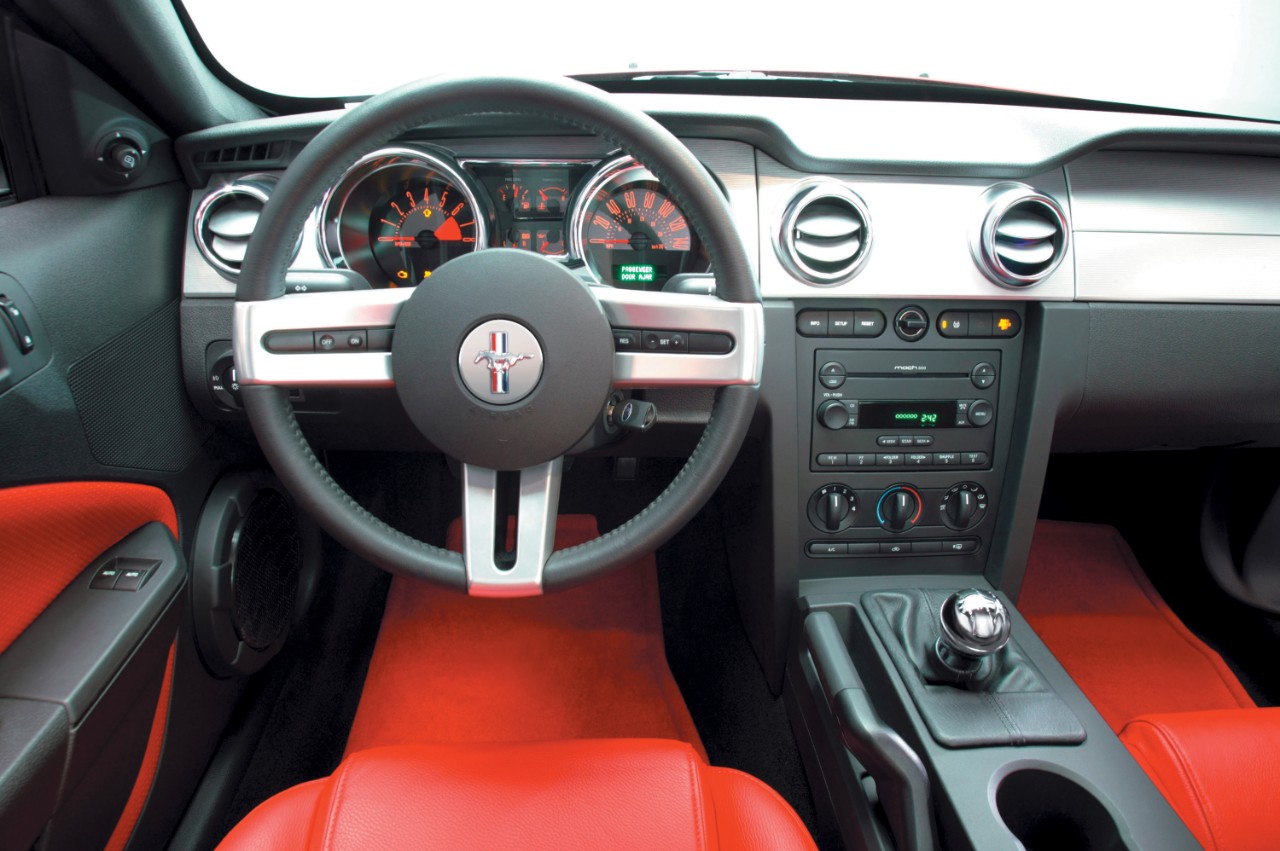
The split cockpit design stayed with the fifth-gen Mustang, which debuted in 2005. This also marked the return of the three-spoke steering wheel with either urethane spokes or aluminum spokes. However, instead of simulated wood like the previous three-spoke wheels (save for the SVO), this one was wrapped in leather.

In 2010, more buttons were added to the Mustang steering wheel, but it retained the classic three-spoke design. The center button was now aluminum instead of acrylic and contrasting stitching was available in an upgrade.
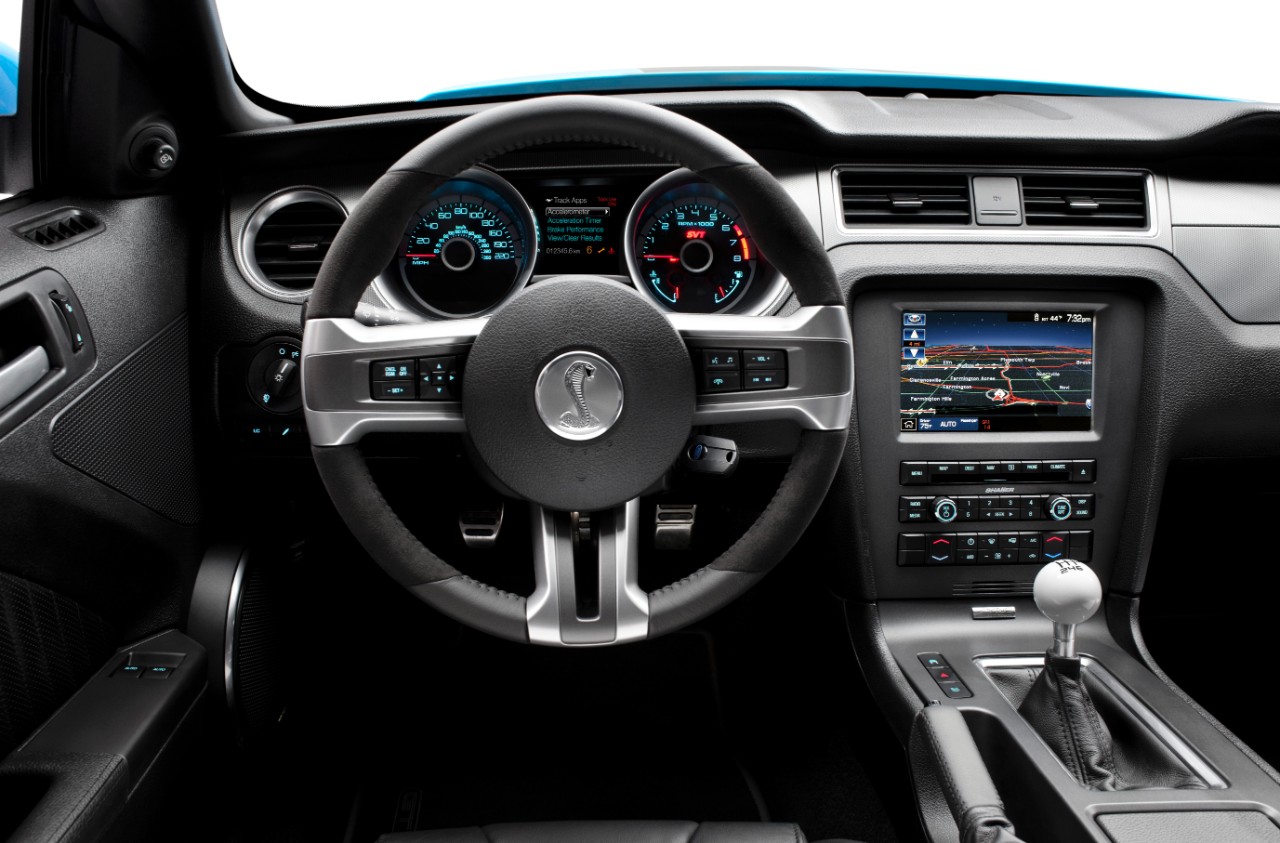
In 2013, the BOSS 302 and Shelby GT500 Mustangs got “race-inspired” Alcantara-wrapped steering wheels while all models received revisions to accommodate the in-car tech control center. This included a four-way d-pad and an “OK” button.
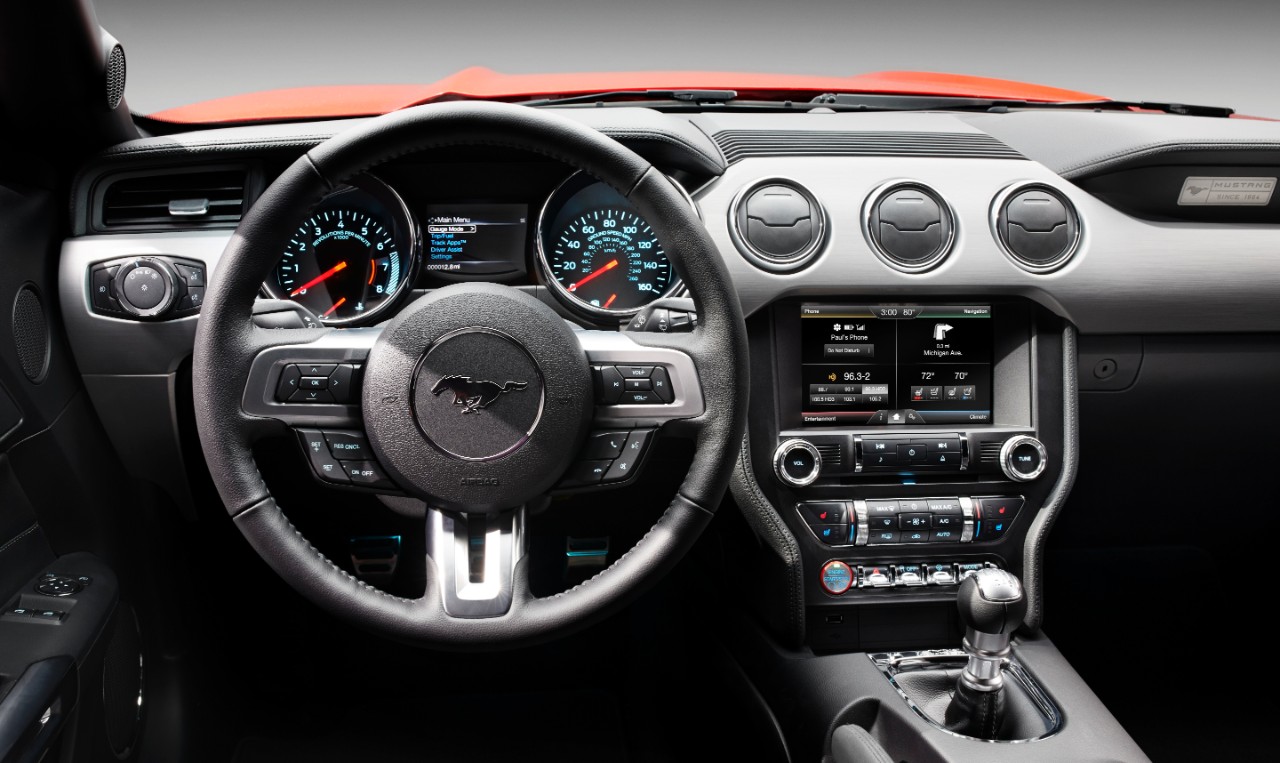
2015 marks the 50th anniversary of the Mustang and features more controls than you could have ever imagined if you were alive for the very first in 1964. There are now 20 buttons to control everything from cruise control to SYNC. If you have an automatic, you also get paddle shifters. This fifth-gen also marks the smallest steering wheel in Mustang history at just 14-inches. The aluminum trim that once graced the rim are now cut back so that the driver’s hands only touch leather.

Finally, the new GT350R and GT350 represent true race inspiration. The flat-bottom steering wheel mimics many found in road racing cars. Drivers can make adjustments to the car that include power steering effort, MagneRide settings for the suspension, advanced driver modes and even exhaust tune. To further the race car for the street feel, the rim is wrapped in Alcantara and the GT350R has a strip on the center at the top of the rim to let the driver know when the wheel is centered and for steering wheel counting. The Shelby Cobra logo appears on the center of the wheel – the only place where the logo can even be found. The aluminum spokes are also darker to hint at the more aggressive nature of the Shelby Mustangs.
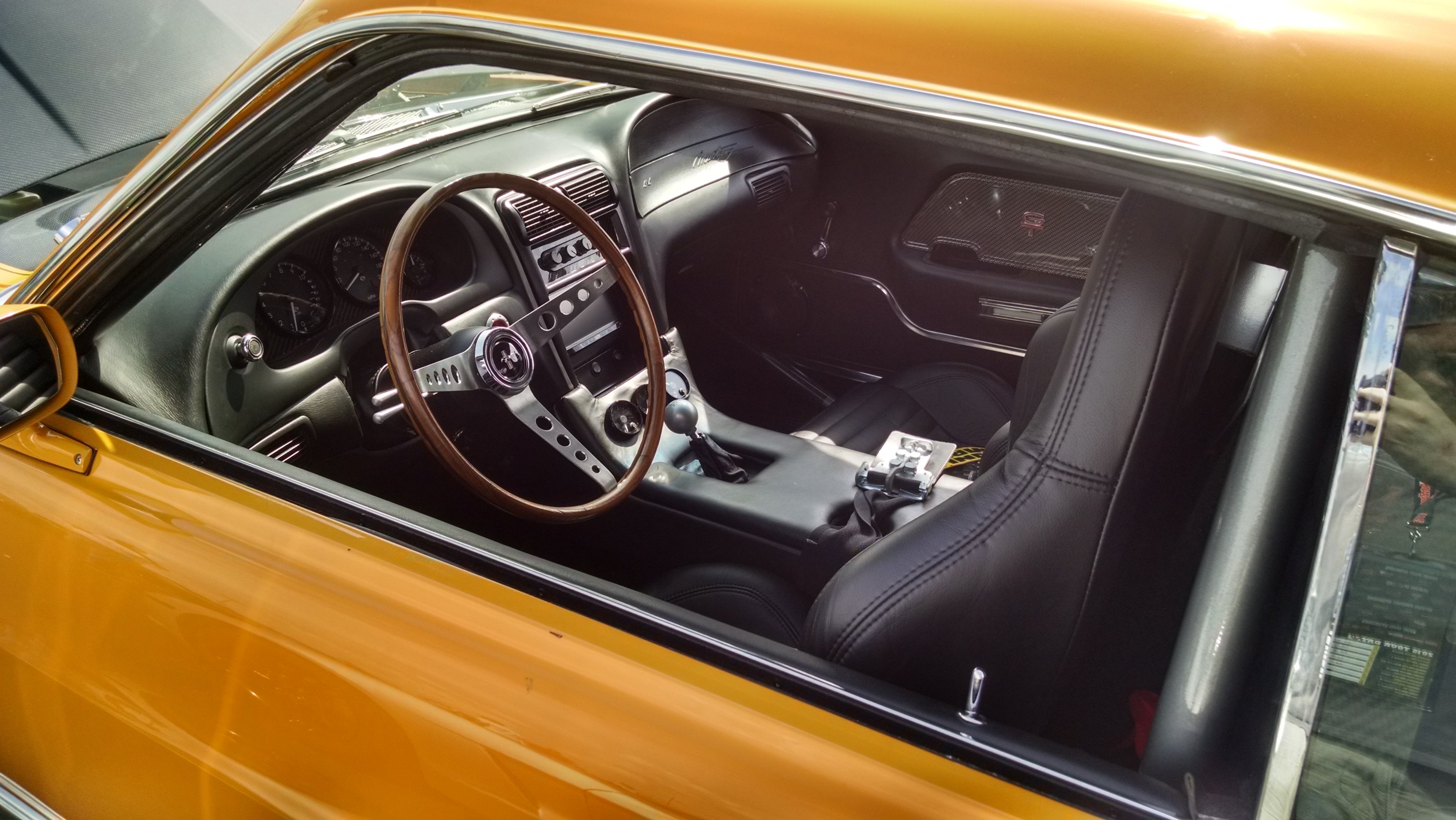
Of all of the years of Mustangs, which interior was your favorite?
